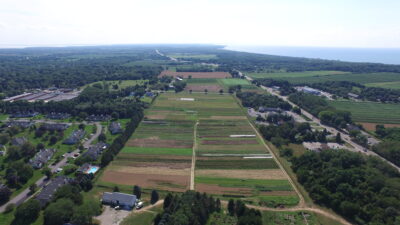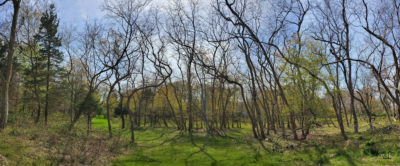Blog
Climate & Conservation: Now and for Future Generations
By Yvette DeBow-Salsedo
The challenges of this year are still with us. As we adapt to changes brought on by the pandemic, we continue to hear how various stages of economic lockdown have given Mother Earth moments of recovery. But these moments, due to severely reduced travel and closures in factories, are fleeting.
Nonetheless, perhaps this is a moment when we can focus on actions that we can all take on a permanent basis to reverse the damage caused by climate change.
To reverse course, we must work toward a future where we:
- emit fewer greenhouse gases
- sequester carbon and build soil
- anticipate sea-level rise
- increase our use and investment in renewable energy sources
- improve our biodiversity by nurturing native plants and species – including pollinators
- bolster our local food resources
- protect our resilient wetlands and shorelines to absorb storm surges
- reduce nutrients and runoff in surface waters that cause harmful algal blooms
- expand and protect watersheds that recharge our drinking water.
Here on the East End, conservation and sustainable land management practices can help achieve these goals.
With your support, the Trust is strategically conserving land a) with prime agricultural soils, b) within groundwater protection areas, and c) along our vulnerable shorelines.
And, we are also providing workshops on land management practices to help growers and residents implement:
- soil health practices that build soil, sequester carbon and reduce excess nitrogen, via composting, utilizing cover crops, buffer plantings, and stormwater management.
- sustainable landscaping practices that encourage native plants, provide habitat for wildlife necessary for pollination and biodiversity, and reduce or eliminate the need for fertilizers and pesticides.
Undeveloped, natural landscapes, including woodlands, farmlands, meadows and other natural habitats, absorb carbon dioxide emissions. Wetlands and shorelines absorb storm surges and protect coastal communities. Growing food in our communities reduces transportation costs and pollution related to importing food. Using regenerative agriculture practices improves soil health and reduces the need for fertilizers and pesticides. So, if we work together to conserve more land, grow more food locally, care for our soil, and protect our shorelines we really can mitigate the negative impacts of climate change.
The following are a few of the recent projects and programs that your support makes possible. Thank you!
![block.image[0].title](/assets/images/20190429_152436_stitch.jpg)
Water Quality
On Long Island, the combination of continuing sea level rise and increasing demand for drinking water are colliding, intensifying salt-water intrusion into our sole source aquifer. By conserving land near drinking water wellheads and in sensitive areas of the aquifer, we reduce development in these areas and provide more land for water recharge.
Since 2017, we have received a grant match commitment of $9 million from New York State for the acquisition of land or the purchase of development rights in the towns of Brookhaven, East Hampton, Shelter Island and Southold for surface water quality, groundwater recharge areas, and drinking water protection. To date, we have closed on three properties under this program, most recently in Shelter Island.
In February 2020, the Trust acquired (and simultaneously re-conveyed to the Town of Shelter Island) six acres on Shelter Island to protect groundwater by enabling the naturally recurring replenishment of the aquifer. The woodland was a conservation priority because of its location near a public drinking water wellhead and its relatively high recharge potential for the island’s aquifer.
The land will be maintained for passive recreation, such as hiking and birdwatching. A foot trail, trail markers, and a trailhead kiosk are being considered.
To learn more about this project, please read our blog post from March 2020.
![block.image[0].title](/assets/images/IMG_2250.JPG)
Living and Adaptable Shorelines
Properly managed wetlands and shorelines can provide storm surge protection. These lands act like sponges, absorbing salt water and reducing surface runoff and the potential for harmful algal blooms. In projects across Suffolk County, the Trust is working with scientists and communities to reduce erosion and implement solutions that restore formerly developed properties.
Most recently, the Trust worked with donor Katharine Rayner to acquire a former restaurant property in Wainscott. Now we are in the process of removing the existing structures and implementing a restoration plan that will include new plantings of native grasses and wetland vegetation. The Trust is also working with the Town of East Hampton and the Friends of Georgica Pond Foundation in ongoing efforts to reduce the stormwater run-off into the pond from both Route 27/Montauk Highway and Wainscott Stone Road. Nitrogen and phosphorus from runoff are major contributors to the harmful algal blooms that have stressed many of our local ponds and bays, including Georgica Pond.
Located where Talmage Creek flows into Georgica Pond, the property sits within the 4,000-acre Georgica Pond Watershed.* The protection of this land will revert a developed property back to nature (today, approximately 59 percent of the land within the watershed is developed*). The area is home to a wide-range of birds, reptiles, finfish and shellfish, and native plants and trees — including osprey, snapping turtles and blue crabs.
To learn more about this project, please read our blog post from September 2020.
*source: Friends of Georgica Pond Foundation
![block.image[0].title](/assets/images/Cabbage1_QHF.jpg)
Cabbage at Quail Hill Farm
Soil Health and Local Food
The Trust’s Farms for the Future Initiative, with its focus on food production farming, is providing resources to acquire, lease, resell, and restore farmland across Suffolk County.
A key component of the program is keeping the agricultural lands healthy and viable for a diverse range of food-related crops — including the requirement that lands under lease must be in cover crop when not actively in food production. Seasonal cover crops (Summer and Winter) protect the soil from erosion, manage nitrogen cycling, and provide important nutrients that build up the soil for future plantings.
In 2020, the Trust leased over 200 acres of farmland to both new and established farmers across the East End – a total of 28 different farm operations. These included vegetables, quail, hogs, snails, flowers, herbs, and bees! Additionally, the Trust continues to work with the Sisters of St. Joseph in Brentwood helping to manage its farmland leases with six growers.
Working with the soil health specialists at Cornell Cooperative Extension of Suffolk County, we have participated in a number of cover crop trials at our Agricultural Center in Southold to see which are most effective here on Long Island. Trials have shown that sunn hemp and a mix of sorghum sudangrass, and sunn hemp in summer, and rye in winter were the best performers.
All of this and more we are able to do everyday with your support!
Interested in continuing the conversation? Contact Melanie Cirillo, Director of Conservation Programs, Matt Swain, Director of Stewardship, or Dan Heston, Director of Agricultural Programs.



